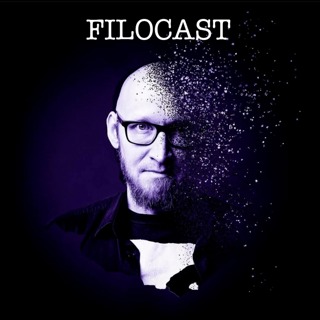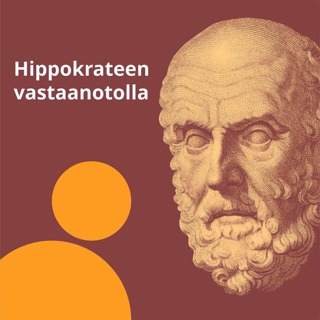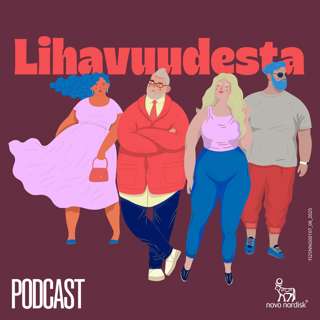
24. Dr. Alan Stern and Dr. David Grinspoon — Chasing New Horizons: Inside the Epic First Mission to Pluto
Listen in on this remarkable conversation with mission leader Dr. Alan Stern and co-author of the spell-binding new book Chasing New Horizons, Dr. David Grinspoon, as they recount the story of the men and women behind this amazing mission: of their decades-long commitment and persistence; of the political fights within and outside of NASA; of the sheer human ingenuity it took to design, build, and fly the mission; and of the plans for New Horizons’ next encounter, 1 billion miles past Pluto in 2019. Told from the insider’s perspective of mission leader Dr. Alan Stern and others on New Horizons, and including two stunning 16-page full-color inserts of images, Chasing New Horizons is a riveting account of scientific discovery, and of how much we humans can achieve when people focused on a dream work together toward their incredible goal. Nothing like this has occurred in a generation―a raw exploration of new worlds unparalleled since NASA’s Voyager missions to Uranus and Neptune―and nothing quite like it is planned to happen ever again. The photos that New Horizons sent back to Earth graced the front pages of newspapers on all 7 continents, and NASA’s website for the mission received more than 2 billion hits in the days surrounding the flyby. At a time when so many think that our most historic achievements are in the past, the most distant planetary exploration ever attempted not only succeeded in 2015 but made history and captured the world’s imagination.
22 Touko 20181h 12min

23. Dr. Kenneth R. Miller — The Human Instinct: How We Evolved to Have Reason, Consciousness, and Free Will
Ken Miller is well known for his work in debunking Intelligent Design Creationism, most notably for his testimony in the Dover Pennsylvania trial that demolished the legal strategies of the movement to have creationism taught in public school science classes. His book, Only a Theory: Evolution and the Battle for America’s Soul recounts his experiences and argues why evolution is true. Now, in his new book, Dr. Miller presents a radical, optimistic exploration of how humans evolved to develop reason, consciousness, and free will, contra scientists such as Richard Dawkins and Sam Harris who tell us that our most intimate actions, thoughts, and values are mere byproducts of thousands of generations of mindless adaptation. We are just one species among multitudes, and therefore no more significant than any other living creature. Brown University biology professor Miller contends that this view betrays a gross misunderstanding of evolution. Natural selection surely explains how our bodies and brains were shaped, but Miller argues that it’s not a social or cultural theory of everything. In The Human Instinct, he rejects the idea that our biological heritage means that human thought, action, and imagination are pre-determined, describing instead the trajectory that ultimately gave us reason, consciousness and free will. A proper understanding of evolution, he says, reveals humankind in its glorious uniqueness—one foot planted firmly among all of the creatures we’ve evolved alongside, and the other in the special place of self-awareness and understanding that we alone occupy in the universe.
19 Touko 20181h 38min

22. Dr. Gregory Berns — What It’s Like to Be a Dog…and Other Adventures in Animal Neuroscience
In this wide-ranging dialogue (recorded on September 1, 2017) on the nature of consciousness Dr. Michael Shermer talks with Dr. Gregory Berns, Distinguished Professor of Neuroeconomics and Director of the Center for Neuropolicy and Facility for Education and Research in Neuroscience. Dr. Berns is famous for his use of fMRI to study canine cognitive function in awake, unrestrained dogs. The goals of his research are to non-invasively map the perceptual and decision systems of the dog’s brain and to predict likelihood of success in service dogs. He also uses diffusion tensor imaging (DTI) to reconstruct the white matter pathways of a wide variety of other mammals, including dolphins, sea lions, coyotes, and the extinct Tasmanian tiger. Shermer and Berns address the so-called “Hard Problem of Consciousness” of “what is it like to be a bat (or dog)?” What is it like to be another sentient being has been impossible to understand until and unless we can get inside the other conscious creature’s head. Now we can thanks to this new technology. Of course, we cannot have a first-person subjective experience of being a dog—and in this sense the “Hard Problem of Consciousness” is something of a conceptual error inasmuch as it can never be answered in this first-person subjective sense, but we can come close to understanding what dogs (and other conscious creatures) are thinking and feeling.
16 Huhti 20181h 9min

21. Dr. Leonard Mlodinow — Elastic: Flexible Thinking in a Time of Change
Out of the exploratory instincts that allowed our ancestors to prosper hundreds of thousands of years ago, humans developed a cognitive style that Mlodinow terms elastic thinking, a collection of traits and abilities that include neophilia (an affinity for novelty), schizotypy (a tendency toward unusual perception), imagination and idea generation, pattern recognition, mental fluency, divergent thinking, and integrative thinking. In this remote Science Salon (recorded on March 22, 2018), Dr. Shermer begins by asking Dr. Mlodinow what it was like to work with and get to know Stephen Hawking, on which the two worked together on two books. Hawking had to be elastic in his thinking given that his disease prevented him from doing science in the traditional manner. Leonard Mlodinow received his Ph.D. in theoretical physics from the University of California, Berkeley, was an Alexander von Humboldt Fellow at the Max Planck Institute, and was on the faculty of the California Institute of Technology. His previous books include the best sellers Subliminal, War of the Worldviews (with Deepak Chopra), The Grand Design (with Stephen Hawking), and The Drunkard’s Walk, as well as The Upright Thinkers, Feynman’s Rainbow, and Euclid’s Window. He also wrote for the television series MacGyver and Star Trek: The Next Generation.
9 Huhti 201851min

20. Dr. Michael Shermer — Heavens on Earth: The Scientific Search for the Afterlife, Immortality, and Utopia
In his most ambitious work yet—a scientific exploration into humanity’s obsession with the afterlife and quest for immortality—bestselling author and skeptic, Michael Shermer, sets out to discover what drives humans’ belief in life after death, focusing on recent scientific attempts to achieve immortality along with utopian attempts to create heaven on earth. For millennia, religions have concocted numerous manifestations of heaven and the afterlife, and though no one has ever returned from such a place to report what it is really like—or that it even exists—today science and technology are being used to try to make it happen in our lifetime. From radical life extension to cryonic suspension to mind uploading, Shermer considers how realistic these attempts are from a proper skeptical perspective. Heavens on Earth concludes with an uplifting paean to purpose and progress and how we can live well in the here-and-now, whether or not there is a hereafter.
25 Maalis 201855min

19. Bill Nye the Science Guy Saves the World on Netflix
Michael Shermer interviews Bill Nye the Science Guy about his new Netflix series “Bill Nye Saves the World,” which aired Friday, April 21, 2017. The conversation took place on December 18, 2016 at the offices of the Planetary Society, for which Nye is the CEO. Learn more about the series on Netflix.
7 Maalis 20181h 25min

18. Dr. Bart Ehrman — How a Forbidden Religion (Christianity) Swept the World
In this remote Science Salon (recorded on February 19, 2018), Dr. Shermer converses with the great bible scholar and historian Dr. Bart D. Ehrman, the Distinguished Professor of Religious Studies at the University of North Carolina at Chapel Hill. Dr. Ehrman is a leading authority on the New Testament and the history of early Christianity and the author of 8 Teaching Company courses and a number of New York Times bestselling books, including Misquoting Jesus and How Jesus Became God. In his new book, The Triumph of Christianity: How a Forbidden Religion Swept the World, Dr. Ehrman explores how a tiny sect of just 20 people at the time of Jesus’ crucifixion in 30 CE became 25 to 35 million Christians by 400 CE. Imagine if the couple of dozen Branch Davidians living near Waco, Texas in early 1990s, instead of being incinerated by Federal agents in a botched stand-off, went on to convert two billion people around the world to their religion. That is what early Christians did. How did they do that? Shermer and Ehrman also discuss the modern atheism movement, how Jesus became a Republican in the second half of the 20th century, the intractable (for Christians) problem of evil, the problem of identity for Jesus (how could he be both man and God?), what pre-Christian pagans believed about the gods, what early Christians had to offer pagans that other religions didn’t, how religions invented the afterlife and what people believed before the rise of Christianity about what happens after you die, and other fascinating topics.
19 Helmi 20181h 18min

17. Dr. Kip Thorne — Gravitational Waves, Black Holes, Time Travel, and Hollywood
Join us for what promises to be one of the deepest and most profound conversations we’ve had in our Science Salon series as Dr. Thorne reflects on his life and career in theoretical physics, his pursuit of the detection of the long-elusive gravitational waves through the LIGO detector, his relationship and bet with Stephen Hawking, how he came to consult on Carl Sagan’s Contact and Christopher Nolan’s Interstellar, his curious work on black holes, wormholes, and time travel, and what it’s like to go to Stockholm to receive the Nobel Prize.
18 Helmi 20181h 14min


















